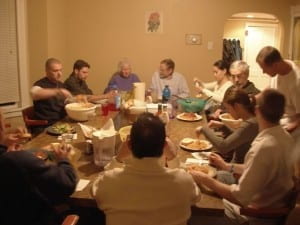| Sponsor | Goal and Objectives | Student Researchers | Executive Summary | Final Report and Video |
Contents
Project Sponsor:
Dismas House is a non-profit organization and a member of the Worcester Green Low Income Housing Coalition (WGLIHC). The mission of Dismas House is to “reconcile former prisoners to society, and society to former prisoners, through the development of a supportive community” (Dismas House, 2014). After the recession in 2008, Dismas struggled financially to maintain its facilities and sadly had to close down one of its houses. This caused the organization to think of creative ways to save money. Dismas discovered that increasing energy efficiency could yield big savings and motivated Dismas House to make renovations toward energy efficiency. The renovations were a great success, which led Dismas to form the WGLIHC in order to introduce energy efficiency methods to low income-housing organizations in Massachusetts. As energy costs rise and the need for energy efficiency increases, Dismas House wants all of the WGLIHC partners to have a plan to reduce energy usage and energy related costs.
Project Goal and Objectives:
Project Goal:
The goal of our project is to work with Dismas House of Massachusetts to promote sustainability and help the WGLIHC reduce energy costs. We conducted a case study analysis of Dismas House in order to understand the process Dismas used to reduce their energy usage, the reasoning behind the efforts they chose, and the reasoning behind their efforts’ success. Through our research and collaboration with Dismas House, we created a blueprint and made recommendations to the WGLIHC for reducing energy. Additionally, we educated the WGLIHC about the opportunities that exist for each of its members, and that its fellow member, Dismas House, used to flourish.
Project Objectives:
1. Understand the process Dismas House used to successfully reduce their energy usage.
2. Identify funding options for WGLIHC members.
3. Create an energy reduction blueprint for the WGLIHC using Dismas House’s success as a framework.
4. Develop methods for sharing project findings with members of the WGLIHC.
Student Researchers:
Elizabeth Cruz (1st from left)
Everett Wenzlaff (3rd from left)
Hui Zheng (4th from left)



